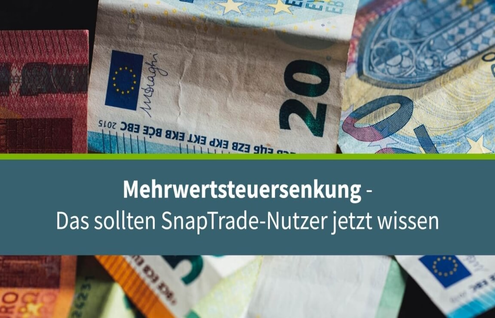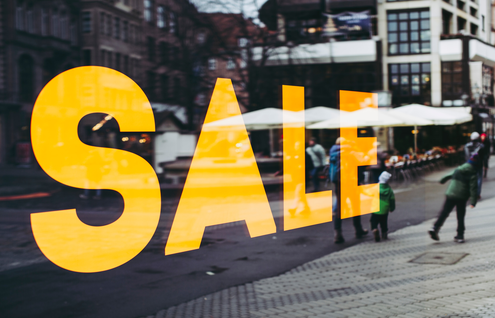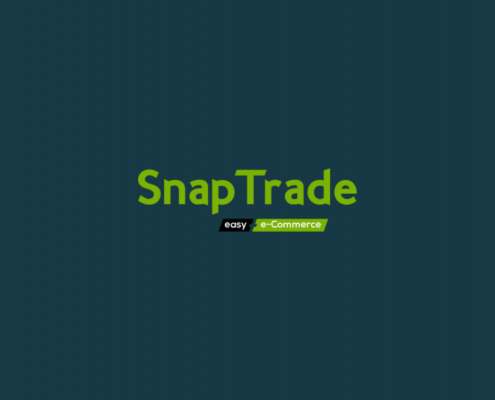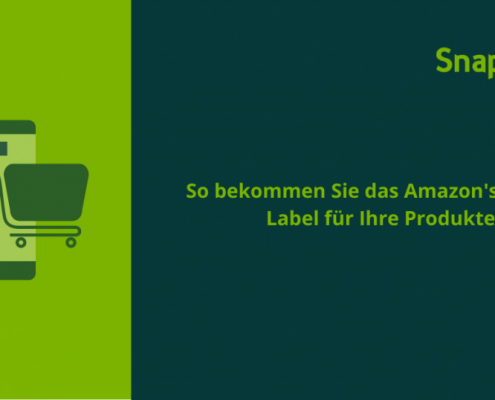Branding on marketplaces: What are the options?

As an individual retailer on Amazon, eBay & Co. you are like a fish in a sea of offers. The ocean is getting busier and busier: More and more providers are entering the market because they want to use the awareness and reach of the marketplaces for themselves. In order not to get lost in the flood of offers, various efforts are necessary: Branding is the magic word. However, e-commerce giants are quite strict when it comes to branding on marketplaces. However, we will show you what options are available in this blog post.
What is branding?
Branding is understood to mean all measures that are intended to help make one’s own brand better known and to ensure that it is perceived by one’s own target group. Seen in this light, branding, as measured by standard e-commerce KPIs, aims to increase impressions.
The prime directive of branding is to increase visibility. Click rates and sales, on the other hand, initially play a subordinate role. However, there is good reason to believe that a significant increase in visibility will also lead to an increase in sales in the medium and long term, as, for example, the number of customers will rise. Advertisements always have a certain sales opportunity. This increases the more frequently the ads are played.
Reading Tip:
Read more about
the most important Amazon KPIs
you can read on our blog.
Why is branding so difficult in marketplaces?
(Visual) language, value proposition, colors, fonts, tonality, and corporate appearance: all of these are important components of branding, as they influence the perception of potential customers and ensure that your brand sticks in their minds.
The crux of a branding strategy on marketplaces such as Amazon, eBay and the like, however, is that you don’t enjoy the same design freedom as you would with your own online store, for example. That makes sense, too: In order for customers to find their way around the vast number of platforms, a certain degree of conformity is important. However, this inhibits the building of a brand and the associated increase in brand awareness.
Optimize your margin with SnapTrade
If you’re having a hard time establishing your brand in marketplaces, take a different approach and optimize your pricing. This is where SnapTrade helps you! With the tool’s dynamic price adjustment and smart strategies, you always sell at the optimal price and win the BuyBox more often. Which not only increases visibility, but also sales.
Branding strategy: How can branding work in marketplaces?
The question, then, is what a branding strategy that works can look like. Some of the ways are presented below.
Brand protection with the Amazon Brand Registry
For a brand to be purposefully built, it must be protected. The Amazon Brand Registry gives merchants the opportunity to do just that.
The prerequisite for use is a trademark number from the Intellectual Property Office (in Europe, the EUIPO is responsible for this). Once registration has taken place, Amazon’s automated protection mechanisms can ensure that corresponding content is removed in the event of trademark infringement. In addition, you can take action yourself and report suspected violations.
Sponsored Brands and Amazon Stores
In addition to brand protection, the Amazon Brand Registry unlocks a number of branding options. For example, you can create multi-page free Amazon Stores for your brand and use Sponsored Brands. The latter are ads with your logo, your own headline and up to three products.
Brand protection on eBay with the VeRI program
eBay also has a mechanism, the VeRI program, that allows you to report trademark infringement. The abbreviation VeRI stands for Verified Rights Owner, which sort of implies that you have to register your trademark with the EUIPO, similar to the Amazon counterpart, before you can use the program.
Unlike the Amazon Brand Registry, VeRI is “only” for brand protection, you do not unlock branding opportunities with it.
SEO
The term SEO still evokes little enthusiasm among marketplace traders, who have specifically chosen the already established marketplace in order not to be completely on their own when it comes to building (organic) traffic. In fact, SEO is also an effective tool in the implementation of your branding strategy, as it will help you appear more often in the search results of the marketplaces and thus increase their visibility.
For both eBay and Amazon SEO, a few simple ground rules apply:
- Use appropriate categories and item features so that customers can quickly find their way around
- Sprinkle in suitable terms (keywords) for which you would like to be found
- Use appealing images that show your products in as much detail as possible
- Avoid superlatives in your product texts and give credible product features, this creates trust.
Reading tip: eBay and Amazon SEO are closely linked to product copywriting. Learn how to write appealing product texts in our blog.
Storytelling
Branding on marketplaces does not mean that it only has to take place on marketplaces. On the contrary, for many brands, new customer acquisition takes place outside of Amazon & Co. This applies in particular to storytelling, which is becoming increasingly important, because as already mentioned, Amazon & Co. leave little room for telling a credible brand story.
For this reason, you are almost forced to switch to other channels for this branding measure. The typical social media platforms in particular are predestined for building your brand. Which channel is the right one depends very much on your target group: While Facebook and Instagram are best suited to address B2C customers directly, LinkedIn is most likely the best choice in the B2B sector. In addition, YouTube and Pinterest are becoming more and more interesting for companies.
Corporate Identity
While product detail pages on eBay and Amazon can only be designed to a certain extent, your products can still carry a corporate identity to the outside world, which has a decisive influence on the perception of your brand. For this reason, you should definitely not disregard corporate identity if you decide to sell on marketplaces. This part of branding is mainly about the things we have already mentioned elsewhere: Logo, colors, fonts, tonality, etc. Over time, parts of the corporate identity can change; Coca Cola, for example, has modernized its logo several times over the decades. However, the Group has also existed for a correspondingly long time. Since a subsequent change in corporate identity can be profound, it’s best to be clear about your brand’s appearance from the start.
SEA
SEA, Search Engine Advertising, is another way you can increase your visibility and it almost always works on the same principle regardless of the channel. You place an ad for your products and pay X amount when it is clicked. The amount can vary greatly depending on the category, product or the search term matching the ad.
You may be listed on Google Shopping Ads, probably still the most popular channel in terms of SEA for store owners, at Amazon’s expense. However, this stroke of luck has now become a rarity as Amazon has drastically cut back its budget for Google Ads (source: fool.com (English)). Unfortunately, it is not possible to promote your Amazon products yourself directly via Google Shopping Ads, for that you need your own online store if you want to implement a branding strategy with SEA.
Amazon itself offers Amazon PPC Ads (PPC = paid per click), a separate option for SEA on its marketplace. The same is true for eBay, where the platform breaks the mold when it comes to paying for ads: you choose a rate for your ad that corresponds to a percentage of the sale price that you set. The good thing about this system is that the costs for the ad are only incurred if a purchase is made within 30 days of clicking on the ad.
Your own online store
In addition to selling on marketplaces, it can be worthwhile to create your own online store, especially for branding purposes. With this one, you are completely free in the design and have more options for customer engagement. For example, you could mail Amazon or eBay customers a coupon that is only redeemable in your store. You can use the magazine for the storytelling already mentioned and keep customers up to date.
Find the best price with ShopSPY
Not only on marketplaces, but also for their own online stores, retailers are looking for the ideal price that is competitive, margin-optimized, and still fair for customers – because successful pricing also creates trust in your brand and is part of your branding strategy. ShopSPY captures and compares portals like idealo, Google Shopping and billiger.de, giving you the opportunity to always sell at the given market price.
Frequently asked questions about branding on marketplaces
Do I need branding?
Whether you actually need active branding efforts for your business depends a lot on your industry and the product portfolio you offer. Branding is especially important if you want to achieve the highest possible repurchase rate and turn new customers into existing customers. Then you want to build trust in your brand. On the other hand, for small and spare parts, as well as items that evoke little emotion, you are less dependent on active branding measures.
What is prohibited when branding on marketplaces?
When it comes to branding on marketplaces, what is generally prohibited in commerce is prohibited: Misleading advertising in which consumers are deceived on the basis of false facts is therefore not permitted. The same applies to infringements of trademark law. With the Amazon Brand Registry and the VeRI program, both Amazon and eBay have established platforms through which brand owners can report infringements.
How do I implement an effective branding strategy?
There are several ways you can strengthen your brand awareness. Since marketplaces severely limit the design of your brand presence, you can switch to other channels for branding and address your customers via social media, for example. Especially for customer loyalty, it can also be worthwhile to have your own online store. However, there are also branding measures that take place directly on the marketplaces: In addition to protecting your brand, Amazon offers sponsored brands and its own brand stores, for example. With SEO and SEA you can increase your visibility, which is ultimately the ultimate goal of branding.










